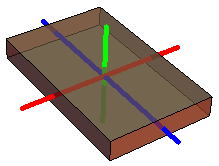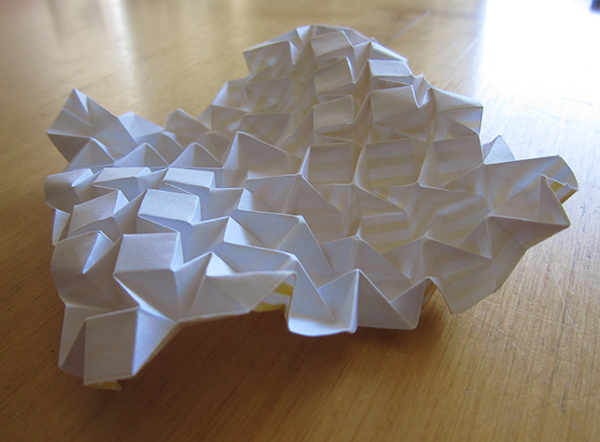For my monthly repost, I thought I’d reach way back to bring you this post from 2008. I was a physics undergrad back then!
Here’s a physics experiment that you can try yourself right now. It’s fun, I promise.
First, you have to find a small rectangularly-shaped object. Nothing valuable or breakable. A box works fine. A book works too, but you may have to tape the book shut for best results. It is important that there are no square sides on the object. All sides must be rectangles!

Here’s my 3-d model of the box (created with Mathematica). Your own box might differ slightly in its shape, but it should be more or less the same. What are those sticks, you ask? They’re just imaginary lines I drew to mark the three principal axes. If you have an object like a cube or a sphere, one axis is as good as another. But for an object shaped like above, there are three special axes of rotation, called the principal axes.
Now, take the box and toss it up into the air. Give it some spin as you toss it. First, make it spin around the blue line, then the green line, and then the red line.* Observe any differences between the three. I will wait.

